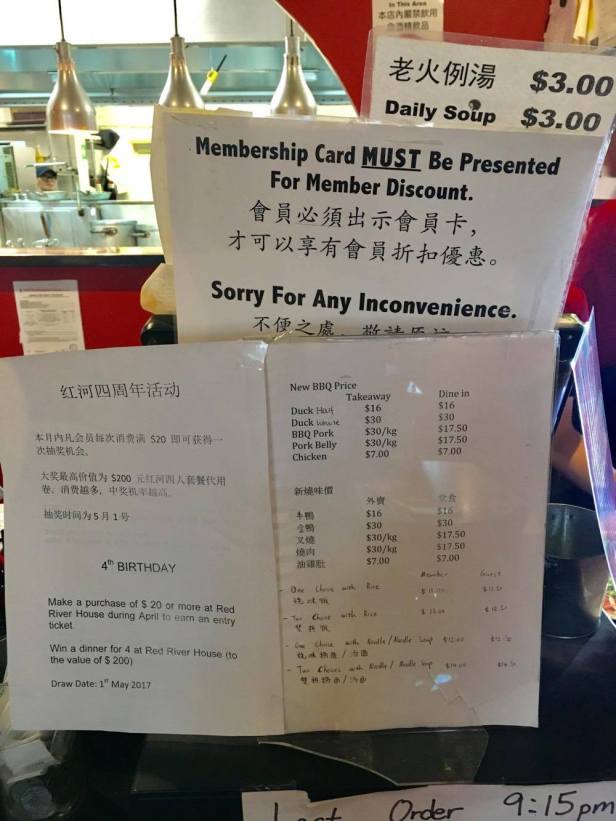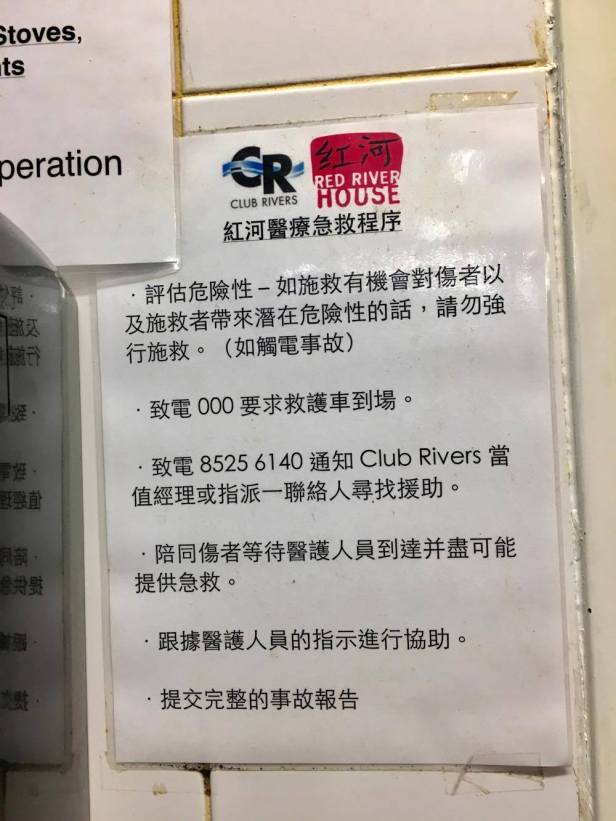#3
Introduction:
Red River House is a local Chinese bistro next to Club Rivers in Riverwood. Its menu consists of affordable dishes from Chinese, Hong Kong, Thai and Vietnamese cuisine, which attracts a lot of local Asian customers. The restaurant employs Chinese waiters who can speak Cantonese or Mandarin and English to communicate with its customers. This allows customers to feel comfortable in the diner as they don’t have to struggle to order at the counter. Signs posted up in the restaurant are printed and laminated with two translations.
Below is an image of their news board to display their weekly specials. The specials are printed in English accompanied by the Chinese translation. All besides the chicken wings special which only has Chinese characters.

There is an abundance of signs when you get to the counter. These signs are used to inform customers of store policies, news updates and changes in menus. As you can see, English and Chinese translations are both provided so that no group is excluded to avoid miscommunications.

Inside the kitchen is a different story. The kitchen employees cannot read or understand English, so the signs directed to the restaurant employees are written in Chinese. Signs that are directed to the staff of Club Rivers are written in English.
The sign in Chinese directs staff on how to respond to an emergency situation, required by WHS policies.

The sign in English informs cleaners or Club Rivers managers and employees of kitchen operations and maintenance. The sign was created as the restaurant cooks the soup base for pho over night, and if the stoves are turned off, the restaurant will be unprepared to serve the next day’s customers.

Observations & Interview Summary:
In contrary to other workplaces, the dominant language at the Red River House restaurant is mainly Cantonese, a southern Chinese dialect. My interviewee, SC, speaks Mandarin and English and uses both of them at work. She stated that despite being fluent in Mandarin and English, Cantonese comes in handier as the number of people speaking Cantonese in this workplace is uncountable. She encounters problems when customers don’t understand or speak Mandarin, especially older aged people who can only comprehend and communicate in Cantonese, with no knowledge of English or Mandarin. This is also common amongst her other colleagues.
Regardless of the linguistic landscape of her workplace, SC believes that English is the national language of Australia, however, she doesn’t believe that there is a monolingual English ideology. She celebrates the idea of a multicultural society, where people shouldn’t be forced to speak English, but rather in the language that is easier for them to communicate in. The only time that speaking a different language causes issues is when they are faced with racism, which can cause physical and mental harm to whomever is facing the situation.
SC holds positive attitudes towards linguistic diversity. She believes that learning different languages can benefit people in different ways as well as feeding their own interests. Linguistic diversity in the workplace is seen as an advantage in handling and communicating with a more diverse range of customers. With that being said, she also explained that the average Australian customer would mind if employees spoke in a foreign language to theirs in a workplace if they were racist. There was one time when a customer said to the girls that we should all speak in English since we are in Australia, instead of talking in languages they don’t understand. However, most customers understand that employees use foreign languages for better communication between others who share the same background.
SC believes that everyone should have the right to speak in whichever language they want to, and workplaces should not have to be monolingual (English) but rather be dependent on the languages that employees use.